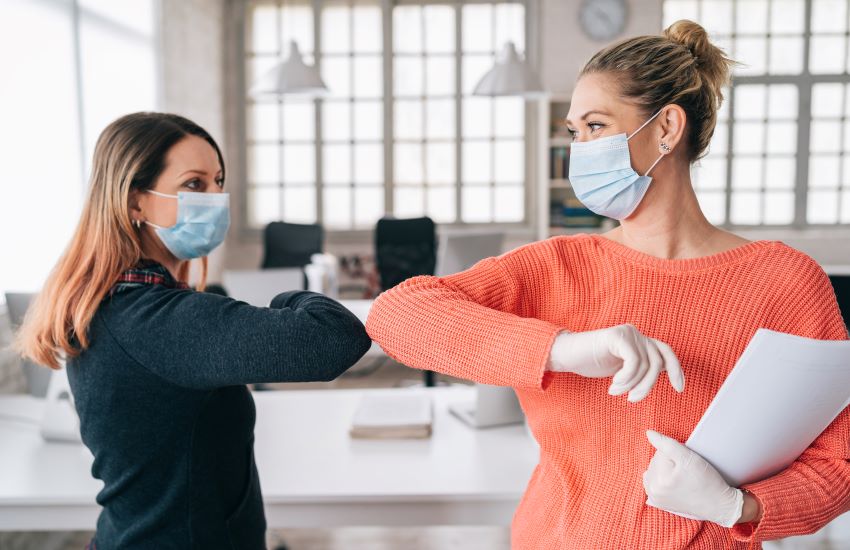Back in the day, a community was a well-knit group of people who knew each other and looked out for one another. If someone was sick, the community rallied around them to help them improve. Fixing broken fences, installing street lights, weekly community meetings, and block parties were all part of the package. But things have changed now.
Nowadays, people are more likely to keep to themselves and mind their business. It’s not that people have become less caring; it’s just that they don’t know their neighbors like they used to. As a result, the responsibility of promoting health and safety guidelines falls on the shoulders of the community leaders.
What is a Safe and Healthy Community?

source: ishn.com
Communities immune to water and sanitation issues, increasing crime rate and violence, and poor infrastructure can qualify as safe and healthy.
The essence is to provide necessary facilities and amenities to its residents so they can live their lives without worrying about their safety.
Following are a few characteristics of a safe and healthy community:
- Access to safe drinking water, toilets, and washing facilities
- Effective waste management system
- Good air quality
- Low crime rate
- Reliable emergency services
Community members are more likely to participate in community activities and events when they feel safe. They feel a sense of belonging and are proud to be a part of the community. This sense of pride and belongingness is what makes a community strong.
There are various ways community leaders can enhance community safety and promote health guidelines. Let’s take a look at a few of them:
Assess and Manage:

source: aha.org
Risk assessment is the first stepping stone toward making a community safe. It helps identify potential risks and hazards in the community. They could range from chemical spills to dog bites. Once identified, it is easier to put in place measures to mitigate them.
For example, if the community is prone to flooding, the leaders can put signs warning people about the risks and advise them on what to do in case of a flood. On a higher level, the government can take measures to reduce the risk of flooding by building dams and levees.
Similarly, if the community has a construction site, the leaders can put up fencing to ensure that people don’t wander into the site and get injured.
Create Awareness:
It’s not a one-person show to manage and maintain a community’s health and safety. A conjoined effort from every community member is required to make it work.
Creating awareness about health and safety issues is an excellent way to get people involved. It helps them understand the importance of following safety guidelines and taking precautions.
One way to create awareness is to hold community meetings where experts can discuss various health and safety issues. The experts can answer questions from the community members and help them clear their doubts.
Another way to do this is to put up posters and banners in public places. These can be about general safety tips or issues like fire safety, road safety, etc.
The second phase of the process is about implementing what has been discussed. Community leaders need to lead and set an example for others to follow. Only then will the initiative be successful.
Enforce Rules and Regulations:

source: pinterest.com
Rules and regulations exist for almost every aspect of social life. They protect people from harm and ensure they live in a safe and healthy environment. But are they always followed? Whether it’s traffic rules or safety regulations in workplaces, people often disregard them.
Therefore, enforcement becomes an integral part of the process. Strict action must be taken against those who violate the rules. Only then will people start following them.
Community leaders can enforce rules and regulations in various ways. For example, enforcing traffic rules may include setting up speed cameras and catching people who violate them.
Workplace safety regulations can be effectuated by conducting regular audits and fining companies who don’t follow them.
Focusing on Infrastructure Design and Safety:
The physical design of a community also plays a vital role in its safety. The layout of the streets, the placement of buildings, and the availability of public places all contribute to the safety of a community.
Well-lit streets, for instance, deter crime. Having public places like parks and playgrounds encourages people to come out of their homes and interact with each other. It also promotes healthy living.
The safety of workers (regardless of the industry) is important, too. Providing them with the necessary safety equipment and ensuring that they are adequately trained to use it can go a long way in preventing accidents.
Additionally, ensuring high-quality building materials is a long-term investment in the safety of a community. It will save people and their investment in case of any unforeseen events.
Conclusion:

source: pinterest.com
A safe and healthy community nurtures its people and ensures better living standards. Other factors like emergency preparedness, access to good schools, quality education, and updated healthcare facilities contribute to a community’s safety.
However, without the cooperation of the community members, it becomes difficult to promote and maintain health and safety guidelines. Everyone must work together, even if it means taking up small roles like litter picking or reporting potholes. Only then can we hope to achieve a safe and healthy community for all.




